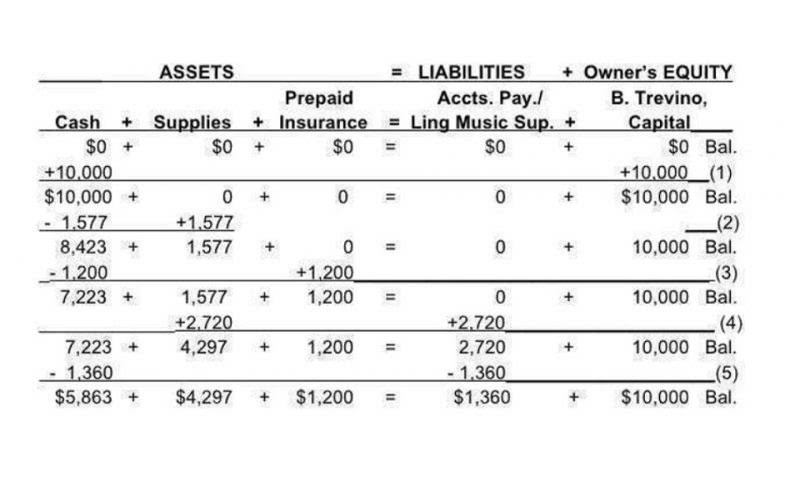We used the unbilled accounts receivable account to prevent confusion with the bill receivable which represents the amount we already bill to customers. Each small job will be considered as finished only after they are delivered to the customers. It requires the company to separate the work into small units which are not practical for all construction. All of the components must be measured reliable which enables the accountant to record them into the financial statement. Contact PVM Accounting for tailored solutions to streamline your accounting practices.
What is CIP in accounting?
When the asset is completed, you will debit the appropriate PP&E account and credit the total amount held in CIP that relates to that specific asset. For example, Auto Parts Store builds an extra storage facility for its inventory. When the building is ready to move into, they will debit Buildings and credit Construction in Progress. No, CIP cannot be depreciated because it is not yet a complete and functional asset. Depreciation is only applicable to fixed assets that are expected to have a useful life and decline in value over time.

Step-by-Step Guide to Accounting for Construction in Progress
- With our expertise, your construction company can focus on completing projects while we handle the numbers.
- The decision is typically based on the stage of completion of the project and the nature of the costs involved.
- Finally, when the assets are used to their full extent, they are written off and potentially replaced with new assets.
- Without it, you may miss expenses or misallocate costs, which can undermine project budgets and financial reporting accuracy.
- CIP is applicable to industries involved in construction or major capital projects, including real estate, infrastructure, manufacturing, and oil and gas.
- Trust Plumb to handle the intricate details of your CIP accounting, so you can focus on what matters most.
- This article explores key aspects of CIP accounting in compliance with GAAP, helping construction professionals, accountants, and businesses navigate the complexities of capital project financials.
The other side of the transaction will impact the cash QuickBooks or accounts payable balance. It will depend on the nature of purchase that which company has with the suppliers. Ensure your accounting staff is well-versed in GAAP standards and CIP accounting practices. For instance, assume a partially completed warehouse no longer meets regulatory safety requirements.
Managing Construction-in-Progress Assets with Numeric’s Smart Subledgers
However, businesses must carefully evaluate the advantages and disadvantages of using CIP and ensure compliance with accounting standards and principles. When costs are incurred during the construction or development phase of a project, they are initially recorded as CIP on the balance sheet. These costs include direct expenses, such as materials, labor, and equipment, as what is cip in accounting well as indirect costs, such as permits, licenses, and supervision fees.
- It also dictates which revenues and costs related to a construction contract should be recorded and when to record.
- When construction companies and contractors maintain detailed accounting records, they can accurately reflect the financial status of a project.
- CIP accounting is a powerful tool for organizations to measure financial performance, track project costs, and make informed decisions.
- It helps provide insights into the financial health of the projects and enables better decision-making regarding resource allocation and budgeting.
- Accurate tracking of Construction-in-Progress (CIP) costs is fundamental to maintaining financial integrity and ensuring project success.
- However, there are also some drawbacks to using this technique, including the need for well-trained staff and the potential for errors.
- Finally, companies should have their CIP accounting practices in compliance with accounting standards and regulations.
Why Is CIP Classified as a Noncurrent Asset?
- CIP accounting describes the methods used to properly show construction in progress on the financial statements.
- This requires a robust accounting system capable of handling multiple projects simultaneously.
- Construction in progress, also referred to as CIP, is an accounting term used to describe the temporary, special classification of assets under construction.
- Construction-in-Progress (CIP) and Work-in-Progress (WIP) accounting share similar terminology but serve fundamentally different accounting purposes.
- Here is an example to help you visualize what construction-in-progress may look like in your accounting books.
- This can be done by a variety of methods, but the most common is to use the percentage of completion method.
This means that if a construction contract relates to two or more assets, each asset will be treated as a separate contract. Laura Chapman holds a Bachelor of Science in accounting and has worked in accounting, bookkeeping and taxation positions since 2012. She has written content for online publication since 2007, with earlier works focusing more in education, craft/hobby, parenting, pets, and cooking. Now she focuses on careers, personal financial matters, small business concerns, accounting and taxation. Laura has worked in a wide variety of industries throughout her working life, including retail sales, logistics, merchandising, food service quick-serve and casual dining, janitorial, and more. This experience has given her a great deal of insight to pull from when writing about business topics.

- Construction in Progress (CIP) is a noncurrent asset recorded under the Property, Plant, and Equipment (PP&E) section of a company’s balance sheet.
- The basis for the effort expended can be labor hours, the material used, or machine hours.
- Large-scale construction jobs can take years to complete and often require hundreds of separate expenses.
- This is especially true when considering a transition from QuickBooks to NetSuite.
- Detailed documentation—receipts, invoices, records—is crucial for accuracy and audit readiness.
- One of the key aspects of financial reporting is ensuring that costs are matched with the revenues they generate.
In the world of finance and accounting, numerous acronyms https://www.bookstime.com/ are used to describe various concepts and processes. CIP, which stands for Capitalized in Progress, is one such term that plays a crucial role in financial reporting. Whether you are a student, a business owner, or a finance professional, understanding the meaning and implications of CIP is essential. Effectively managing construction-in-progress assets is critical for accurate capitalization, financial transparency, and audit readiness.

Tax Accountant Jobs

Construction-in-progress accounting, when aligned with GAAP standards, is a powerful tool for managing large-scale projects. By following GAAP principles, maintaining accurate records, and using the right tools, construction firms can achieve compliance, enhance financial transparency, and support long-term growth. This principle requires expenses to be recorded in the same period as the revenue they help generate. For CIP, costs are capitalized during construction and expensed as depreciation once the asset becomes operational. In this article, we will provide a clear definition of CIP in accounting, explore its purpose, discuss the accounting treatment for CIP, and provide examples to illustrate its application.

